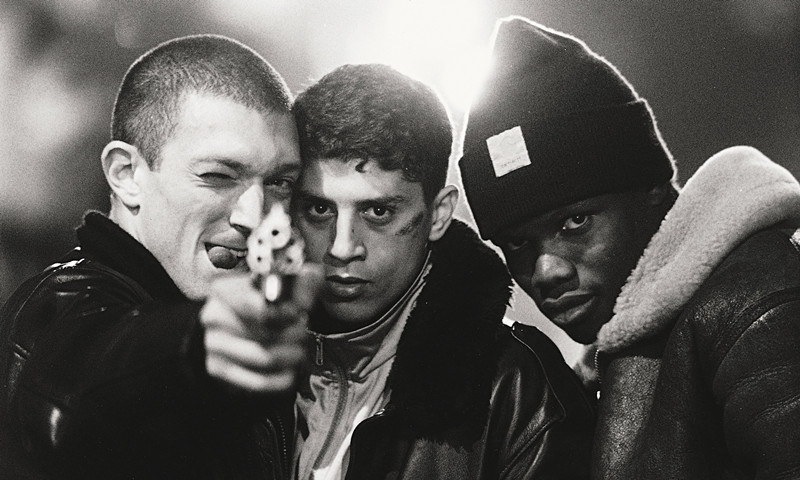
Fight Club was a box-office bomb upon its release yet it has since became a cult classic, an artistic triumph, and cultural anomaly. The film has gone on to inspire several articles and video that interpret the film as a cinematic criticism of anarchy, nihilism, and hyper-masculinity, all confidently claiming the film perceives these practices as being self-destructive forms of behavior that have been encouraged by society and media. And it’s amazing to think that it nearly didn’t become anything historically significant, as the result of tiring studio interference and problems making its money back.
Yet it didn’t because, despite being an aforementioned box-office bomb, it soon received a huge boost in cultural significance in the early 2000s owing to a well-put-together and ultimately successful marketing campaign centered around its home video release. Fight Club sold 6 million DVD and video copies while also making an additional $55 million in video and DVD rentals.
However, the film soon suffered severe traction, disdain, and criticism for supposedly encouraging young men to engage in activities similar to the film that included: starting real-life fight clubs, performing acts of vandalism, arson, and viewing Tyler Durden as a role model rather than a critique of the stereotypical expectations of what the “perfect charismatic cool man” should be. Nevertheless, Fight Club has climatically surpassed its controversial roots, become a pop cultural sensation, and is now forever upheld as a vivid celluloid collage of intense ideas and perspectives.
With all that context out of the way, ten films will now be presented, on this list, that are objectively similar to Fight Club in filmic presentation, themes, plot, and characters. The films chosen for this list are all equally terrific movies that involve similar ideas and manners of artistic execution pertaining to the high skill responsible for creating Fight Club.
The following movies contain elements like: lucid realities, violence in relation to media, filthy or ironically bright yet cinematically enticing visuals, clever writing involving plot twists, and finally, all these films have a cynical and troubled yet relatively normal protagonist plunged into a world within or beyond their grasp of possible comprehension, whether it be literal or metaphorical.
So continue reading, dear onlooker, and maybe you’ll discover a film that can be applied to your personal preferences. (One last note: while this list was being written, spoilers were mostly avoided. Major twist-and-turns will not be disclosed. The only that will be discussed are the film’s aesthetic and possibly the motives of characters depending on the film.)
1. A Clockwork Orange (1971)
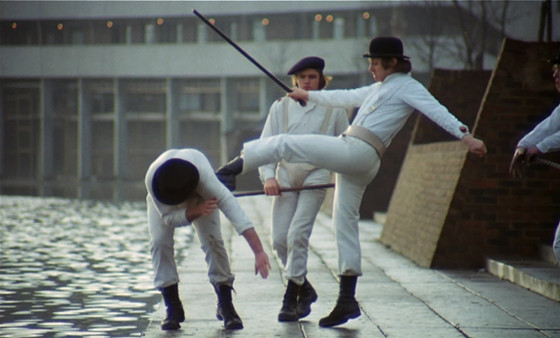
Twenty-eight years before Fight Club would be thrust upon an unsuspecting populace, the world would be suddenly hit by a similarly controversial film adapted from a book featuring an insane yet charismatic character on the silver screen: A Clockwork Orange. Like quite a few films on this list, A Clockwork Orange has a playful yet hideous sense of irony, blending sequences of violent and sexual acts to pretty and majestic musical works like Symphony No. 9 in D Minor, Op. 125, William Tell Overture, and Singin’ in the Rain.
Unlike Fight Club, the film A Clockwork Orange ultimately turned out to be a commercial success upon its release. Yet very much like Fight Club, A Clockwork Orange soon suffered mass disapproval for its virtuously-repulsive central character Alex and the heinous actions he commits throughout the film like rape, assault, home invasion, destruction of private property, and overall psychotic behavior.
While only getting an X-rating in America, Great Britain outright banned the films for 27 years and was ended on December 1999, nine months after the death of the film’s director Stanley Kubrick, who was the one who encouraged and imposed the ban in the first place.
In face of the current, awful deeds of powerful men behind the scenes in Hollywood (Even by someone like the A Clockwork Orange’s director Stanley Kubrick, who was infamous for having mentally tortured and harassed the actress Shelley Duvall on the production of his 1980 film The Shining) and the awakening of the #MeToo Movement, it’s hard to argue why a film like A Clockwork Orange can still be relevant in this millennium.
Yet arguably, it’s important not to look away from the products of the past and act like they never existed. Instead, these films and people should be analyzed, watch, and always discussed. And if there happens to be a copy at your local library, why not? For despite Kubrick’s notoriety, A Clockwork Orange is thoughtful assessment of social ailment and the people behind such ailments. How fault can be attributed to a multitude of factors concerning meek relinquishment in the face of sometimes horrendous free will.
2. Taxi Driver (1976)

Right off the bat, the titular taxi comes at you from the white smog and darkness of a mid 70s New York City and behind it follows its very title “Taxi Driver” while uneasy sensory-pounding music immediately clues you in on the gritty and paranoid world you, the viewer, are about to be plunged into. And that world happens to be the mind-scape of former U.S. Marine Travis Bickle who throughout the film will come off as confused, pitiful, unkempt, defiled, perverted, and demented.
Like actual cases of people who are socially and mentally dysfunctional, Travis leads a life full of habitual contradictions and traditional expectations. He works a full-time job as a taxi driver and would, without taking a second glance, come off to most as a hardworking “average Joe”. Yet spending all those nights alone in his own head while interacting with no one but strangers only encourages his manic-depressive behavior.
There is a whole montage dedicated to showing him exercising and preparing to be a capable would-be-assailant and self-proclaimed vigilante yet while having an unhealthy malnourished diet and suffering from insomnia and inward deterioration of the mind.
Another character in the film, Betsy, even notices this right away when having this following conversation. Betsy quotes the lyrics of the song The Pilgrim by American songwriter Kris Kristofferson, saying, “He’s a prophet…he’s a prophet and a pusher, partly truth, partly fiction. A walking contradiction.” Travis replies with, “You sayin’ that about me?” “Who else would I be talkin’ about?” “I’m no pusher. I never have pushed.” And Betsy ends her thought, stating, “No, no. Just the part about the contradictions. You are that.”
So Travis throughout all of the film is pretty much a body without a mind. He acts upon instinct and never knows what he truly wants. The film’s director Martin Scorsese takes inspiration for this environment from the isolated, calm, and meditative atmospheres of the films of French director Robert Bresson. And Scorsese chooses to impose a similar atmosphere upon the character of Travis Bickle but in a squalid urban setting.
And finally, Taxi Drive is, of course, very tonally similar to Fight Club. Unsurprising since the former predates Fight Club by 33 years and Fight Club easily draws many comparisons to Taxi Driver. Both films have a central character who has a delusional view of his own identity, commentary on toxic masculinity, the main character’s actions will escalate, near the film’s end, towards extreme violent measures, and a nihilistic “happy ending”. Taxi Driver is conclusively a well-structured, thematically rough, challenging, and unhinged neo-noir classic.
3. House of Games (1987)
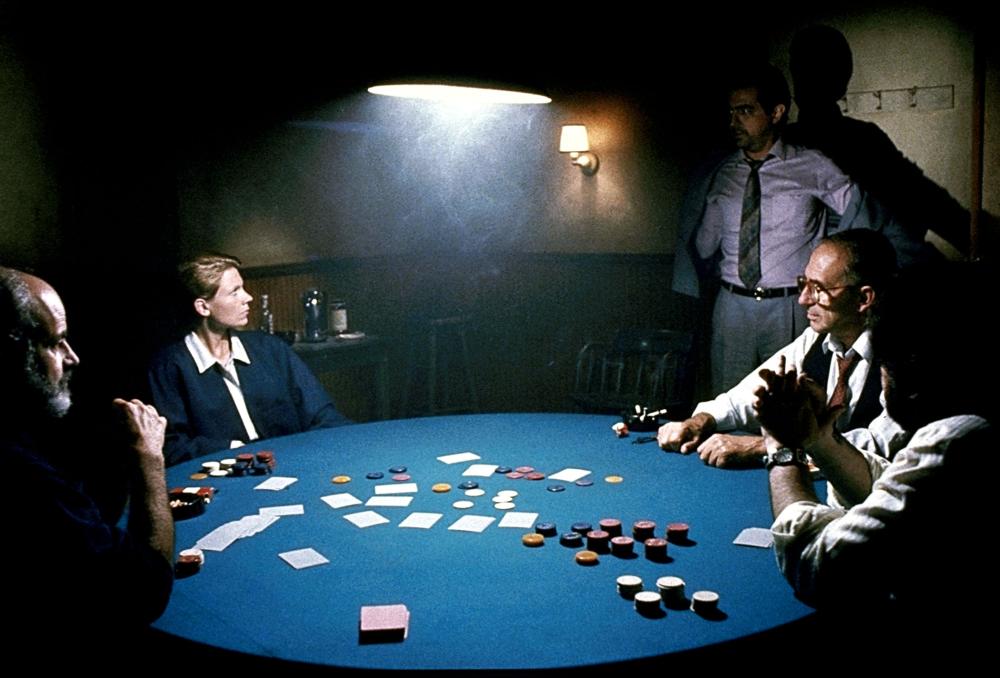
Imagine if Breaking Bad was all about confidence-men, contained extremely well-written conversations that have the equal amount of tension felt when watching the more violent confrontations in Breaking Bad, and all the coercion and excitement you experienced watching one season was squeezed into one hour and forty-two minutes. Then you’d have the 1987 heist film House of Games.
House of Games is a remarkable edge-of-your-seat experience that happens to be the result of nothing but words, well-defined characters, and the experience in theatre of its screenwriter and director David Mamet. And as far as directorial debuts goes, the film is really something marvelous to behold.
Unlike Breaking Bad’s Walter White, House of Games’ Margaret Ford (Played by David Mamet’s former-wife Lindsay Crouse) is far from being in desperate circumstances. Rather, she’s a successful author who lets her own curiosity get the best of her in a very similar manner to Fight Club’s unnamed main character. Soon, she’ll find that she is being led down a rabbit hole of her own creation and it’ll take her learning to be as equally cruel or manipulative to get out of it.
It’s understandable that House of Games will definitely not be everybody’s cup of tea. But if you’re into psychologically-distinctive character studies, this one film certainly will be.
4. Heathers (1988)
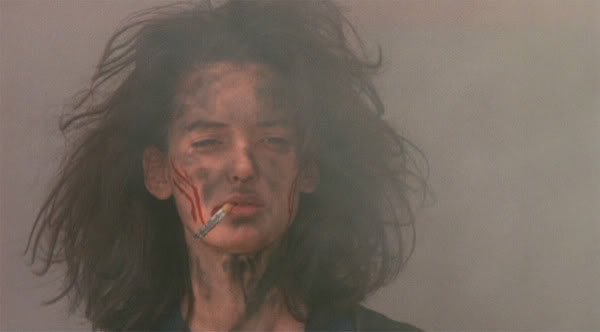
“I can’t believe this is my life. Oh my God. I’m gonna have to send my SAT scores to San Quentin instead of Stanford.”
This is a quote said by Heather’s central character Veronica Sawyer in a major turning point that occurs ⅓ way through the film. Consistently throughout its runtime, Heathers delves into themes concerning revenge, vigilante justice, obsession, suburban isolation, and desensitization but also regret, empathy, friendship, and forgiveness. It reassures that being skeptical of your environment can be healthy while also playing devil’s advocate and stating that being cynical of your environment without properly making the right decisions, considering nuanced social factors, or objectively examining other’s or one’s own extremism, is the wrong way to go.
The film’s main character Veronica (Played by Winona Ryder) is one such person whose hero’s journey represents the growing realization of these self-aware viewpoints but not before spending most of her time as passive and neutral witness on the sidelines of the film’s unfolding events (Despite being the narrator and perspective of the film).
Like the film itself, the opening scene in Heathers is a bright, colorful scenario with dark undertones, in similar manner to another film on this list, Natural Born Killers, and David Lynch’s Blue Velvet. The pristine-looking schoolgirls (known as the “Heathers”, hence the title of the film) are playing a game of croquet while the song Que Sera Sera (Performed by Syd Straw) is heard in the background and fancy fonted credits roll make up an outwardly innocent scene.
Yet slowly, you begin to notice small destructive and oblivious actions such as their stomping on beautiful flowers and one of the Heathers’ eventually and maliciously knocking a croquet ball at Veronica’s bodiless head, revealing the scene to be an odd fantasy. This dreamy sequence ends, bringing us back into the purposely exaggerated and campy yet “real” world that is the rest of the movie (Very much like Fight Club).
To conclude without giving anything anyway, Heathers is essentially a black comedy but climatically is a thoughtful drama. Heathers is concerned with contemplating the one-dimensional societal representation of both those who abuse their own power and the abused who end up in their way, and the only way it can share these perspectives is by offering itself. And what is it? An overall shocking, clever, and amazing film.
5. Naked Lunch (1991)
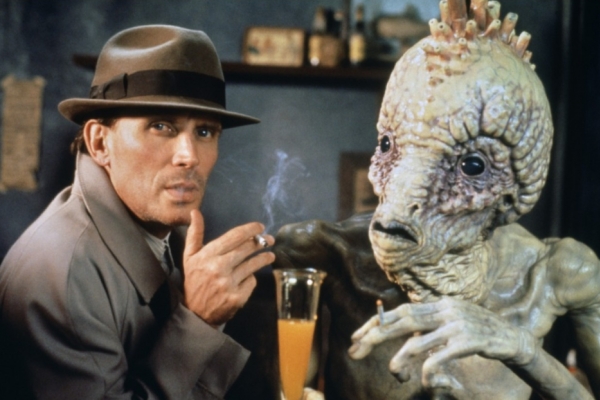
A common theme you may have noticed when reading this list is that all of these films have protagonists immersed in violent worlds created from circumstance in relation to their own choices. All of these films either have main characters that follow the carrot-on-the-stick put in front of them by more sinister and maniacal characters, slowly descend into madness on their own accord, or were already crazy from beginning to end. Naked Lunch is a film whose main character William Lee would be placed in all-of-the-above. It also happened to be an extremely ambitious project that took years to bring the life.
For this film was also adapted from a novel that, throughout the years, was notorious for being “unadaptable”. Mainly due to the fact that it was written by author William S. Burroughs during several hallucinatory drug trips back in the 1950s. But somehow, director and co-writer of the soon-to-be film David “The Fly” Cronenberg pushed through in finishing a screenplay adaptation with co-writer Bill Strait and got the film produced and eventually released.
The film, both like and unlike the book, is a muddled mess yet with purpose, adapting the original source novel while mixing elements from other novels and short stories of Williams S. Burroughs like his 1953 semi-autobiographical work Junkie and even events in Burroughs’ own extremely screwed-up life including the drunken shooting of his wife Joan Vollmer Adams while passing through Mexico City.
Yet despite the experimental film’s concise construction and positive critical reception, it was ultimately impossible for such a film to hope it’d be able to make its money back. Naked Lunch only made a roughly estimated $2 million dollars of its $16 million dollar budget back. The film was obviously too weird and niche for mass audiences of the 1990s and it has been largely forgotten to time as a more notable but still obscure entry in David Cronenberg’s filmography
Like Fight Club, there are themes involving confusion of one’s own identity in correlation to one’s mental health and sexuality and large amounts of homoerotic subtext that can be looked into when examining these subsequent films under an ideological magnifying glass. And even though Naked Lunch’s impact is dwarfed by Fight Club’s, that hasn’t stopped it from garnering a place on the Criterion Collection and the niche status of being an endearing, compelling cult classic character study.